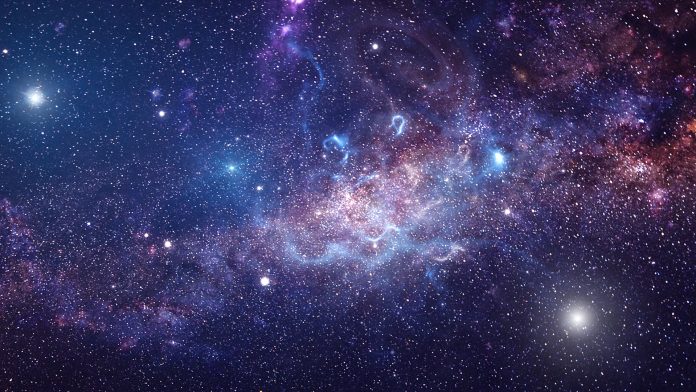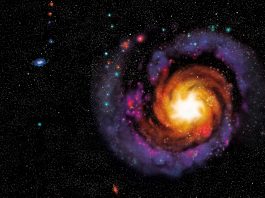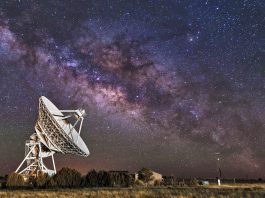A group of astronomers at the University of Arizona have discovered an unprecedented quantity of globular clusters, which could shed light on galaxy evolution.
Discovering globular clusters
The novel globular clusters were found during a survey of the elliptical galaxy Centaurus A, which was completed utilising a combination of ground and space-based telescopes. These observations led to a unique breakthrough in the in the outer regions of the galaxy: a formerly undiscovered wealth of globular clusters, which are old, concentrated groups of thousands of stars that all formed simultaneously.
Understanding galaxy evolution
The team’s findings represent a considerable advancement in our comprehension of the architecture and cosmological history of this galaxy and deliver new insights into galaxy formation and the distribution of dark matter in the Universe.
Centaurus A
Centaurus A, also known as NGC 5128, is an elliptical galaxy showcasing a relativistic jet spewing from a supermassive black hole at its centre and magnificent streams of dispersed stars left behind by past collisions and mergers with smaller galaxies orbiting Centaurus A.
Situated in the constellation Centaurus, 13 million light-years from Earth, Centaurus A is too far away for astronomers to visualise specific stars, but star clusters can be detected and employed as ‘fossil evidence’ of the galaxy’s turbulent evolution.
The researchers have exhibited a novel catalogue of roughly 40,000 globular cluster candidates in Centaurus A, suggesting follow-up observations centred on a set of 1,900 that are the most probable true globular clusters.
The team examined globular cluster candidates out to a projected radius of approximately 150 kiloparsecs, nearly half a million light-years from the galaxy’s centre. The data merges observations from a number of sources including the Panoramic Imaging Survey of Centaurus and Sculptor, or PISCeS; Gaia, a space observatory of the European Space Agency, and the NOAO Source Catalog.
Studying the galaxy’s outer regions
Centaurus A has been the foremost target for extragalactic globular cluster studies as a result of its prosperity and relative closeness to Earth, but thus far most studies have been fixated on the inner 40 kiloparsecs (about 130,500 light-years) of the galaxy, Hughes explained, leaving the outer regions of the galaxy mostly uncharted.
“We’re using the Gaia satellite, which mostly focuses on surveys within our own galaxy, the Milky Way, in a new way in that we link up its observations with telescopes on the ground, in this case the Magellan Clay telescope in Chile and the Anglo-Australian Telescope in Australia.
“Centaurus A may look like an odd outlier, but that’s only because we can get close enough to see its nitty gritty details.
“More likely than not, both elliptical and spiral galaxies like the Milky Way are messier than we realize as soon as we look a little bit deeper than just on the surface,” explained Hughes.
Analysing cosmological history
Hughes added that globular clusters serve as evidence of processes that occurred an incredibly long time ago.
“For example, if you see a line of these globular clusters that all have similar metallicity (chemical composition) and move with similar radial velocity, we know they must have come from the same dwarf galaxy or some similar object that collided with Centaurus A and is now in the process of being assimilated.”
“Globular clusters are interesting because they can be used as tracers of structures and processes in other galaxies where we can’t resolve individual stars,” Hughes added. “They hold on to chemical signatures, such as the elemental composition of their individual stars, so they tell us something about the environment in which they formed.”
The team specifically searched for globular clusters far from the centre of the galaxy since Centaurus A’s substructure points towards a large, unexplored population of such clusters, Hughes explained. Earlier observations had discovered nearly 600 clusters in the more central regions, but the outer regions of the galaxy had remained largely uncharted.
“We looked farther out and discovered more than 100 new clusters already, and most likely there are more, because we haven’t even finished processing the data.”
“We can then use that data to reconstruct the architecture and movements in that galaxy, and also figure out its mass,” Hughes said. “From that we can eventually subtract all its stars and see what’s left – that invisible mass must be its dark matter,” Hughes concluded.









